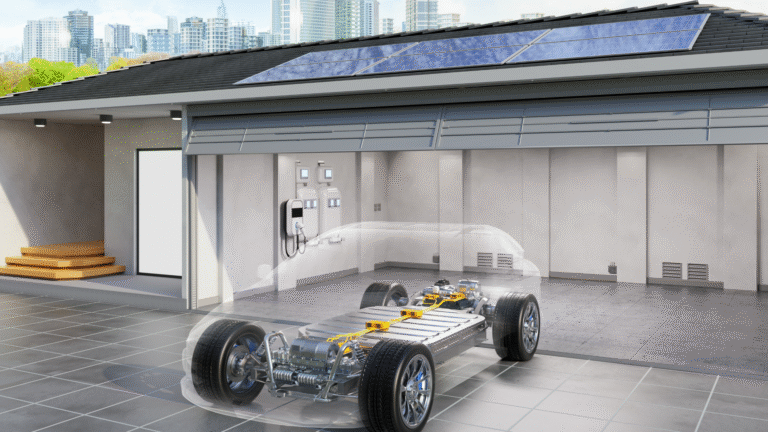As electric vehicle (EV) ownership grows across Australia, many drivers are exploring ways to power their EVs with clean, renewable energy. Charging at home using solar panels or other green sources offers not only environmental benefits but also long-term savings and energy independence.
In this guide, we’ll explore how to charge your EV with renewable energy, the systems involved, and what to consider when setting up your own sustainable charging solution.
Table of Contents
- Why Charge with Renewables?
- Home Charging Basics
- Solar EV Charging: How It Works
- Battery Storage Integration
- Smart Charging and Load Management
- Costs, Incentives, and Payback
- Tips for Setting Up Your System
- FAQs
- Conclusion
1. Why Charge with Renewables?
Charging your EV with clean energy provides key benefits:
- 🌱 Reduces your carbon footprint
- ⚡ Cuts electricity bills
- 🔋 Increases energy self-sufficiency
- 💸 Shields you from rising power prices
By aligning your EV use with rooftop solar production, you maximise the environmental upside of going electric.
2. Home Charging Basics
Most EV owners charge at home overnight using Level 2 chargers (7–22 kW AC), typically installed in garages or driveways. These are connected to your household electricity supply, which can include solar generation.
To enable renewable charging, your solar system needs to be properly sized, and ideally paired with smart charger control.
3. Solar EV Charging: How It Works
When your home solar system generates electricity during the day:
- It powers your home’s electrical needs first
- Excess energy is then directed to charge your EV
- Any shortfall draws from the grid
If you have a smart EV charger, it can time charging to coincide with peak solar production—even if your car is parked during the day.
4. Battery Storage Integration
Adding a home battery (like a Tesla Powerwall or similar) allows you to store unused solar energy during the day and charge your EV at night with clean power.
Benefits include:
- Night-time renewable charging
- Greater energy independence
- Backup power in blackouts
This setup is ideal for those who are out during solar generation hours or want full control over energy usage.
5. Smart Charging and Load Management
Smart chargers can:
- Monitor solar output and grid demand
- Adjust charging speeds dynamically
- Avoid overloading your household circuit
- Schedule charging for off-peak tariffs or high solar windows
These systems optimise both savings and sustainability.
6. Costs, Incentives, and Payback
While the upfront cost of installing solar + battery + charger can be significant, various state incentives and rebates may apply. Key considerations:
- Solar PV systems: $4,000–$9,000 depending on size
- EV chargers: $800–$2,000 installed
- Home batteries: $9,000–$15,000
Payback periods vary, but EV owners often see faster returns due to fuel cost savings.
7. Tips for Setting Up Your System
- ✅ Size your solar array to exceed household and EV needs
- 🔌 Choose a smart EV charger compatible with your inverter
- 📱 Use apps to track energy flow and charging patterns
- 💬 Talk to an accredited solar installer for system design
8. FAQs
☀️ Can I charge my EV only using solar power?
Yes—with enough solar capacity and/or a home battery, you can charge your EV entirely from renewable energy.
🔌 Do I need a special EV charger for solar?
Not necessarily—but smart chargers help optimise solar use.
📅 How long does it take to recoup the investment?
Typically 5–10 years depending on usage, system size, and electricity prices.
9. Conclusion
Charging your EV with renewable energy at home is a powerful way to drive sustainably and save money over time. By integrating solar, storage, and smart charging, Australian drivers can turn their homes into clean energy hubs that support both mobility and climate goals.
Learn how to charge your EV with renewable energy at home—solar setups, smart chargers, storage, and cost-saving tips for Australian households.
